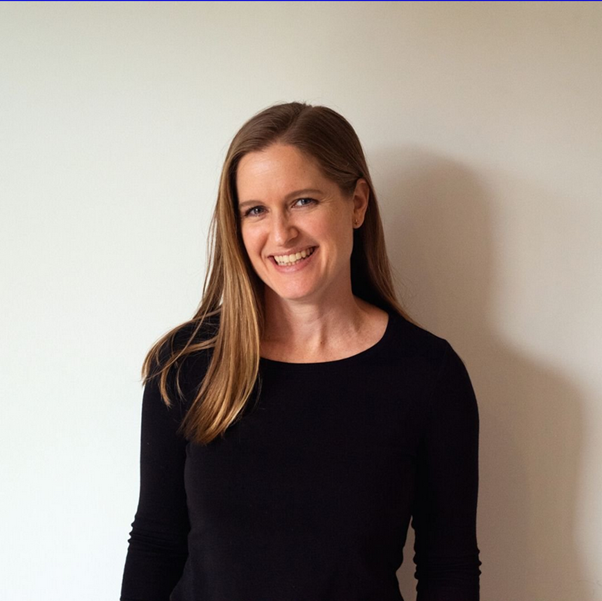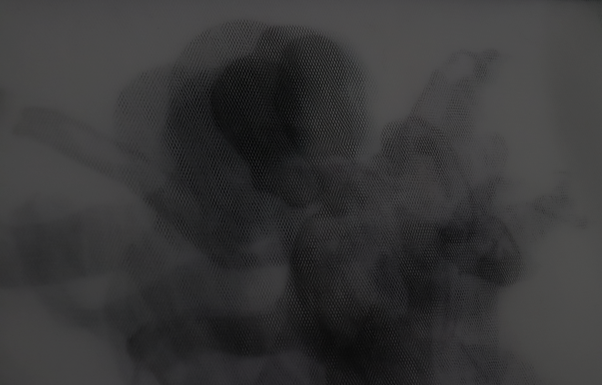Sensoriality Workshop – Olfaction and Gustation – 25th August 2023 6- 9 pm
📍eye square GmbH Schlesische Straße 29/30 D 10997 Berlin

Let’s introduce our guest artist – Erin Adams
Olfactory art is fairly unusual, how did you first get involved in scent design?
My interest in olfactory art began in 2007 when I saw a concert in Melbourne that had several live scents changing throughout the performance. I’m not sure what it was exactly, it may have been some incense or a diffuser (or perfume in the audience) but I felt that the scent really affected and heightened the overall experience of the music.
From that moment on, I became intrigued with the idea of pairing scent with other forms of art. Before that, I hadn’t really thought too much about scent design and the cross-modal effects of the senses. Many years later, while living in Berlin in 2017, I decided to give scent design a try and created my first scent design for a concert.
Can you tell us a bit about your current project Group Sweat?
Earlier this year I read the fabulous book “The Joy of Sweat” by Sarah Everts and it really made me think about the taboo of sweat in Western culture. I do partner acrobatics which can get very sweaty and so when I saw an artist callout from the Berlin Circus Festival I immediately thought that I had to submit a piece about sweat. I was super lucky that they accepted my piece and it is currently on display at the festival until the 20th of August at Tempelhoferfeld.
The artwork is a participatory olfactory art installation that invites audiences and circus performers to donate a sample of their sweat and then smell the combined scent of the Berlin Circus Festival as it evolves over 9 days. We just had a fairly hot, humid, and sunny opening weekend and it has been super fun watching many people work up a sweat and donate it to the work. It is a bit of an experiment and the smell is starting to get quite interesting!
What is your process for designing scents to go with live music?
For the last concert I designed scent for, Audioscentual, I asked all the musicians how they would like the audience to feel- so it was a little bit like group aromatherapy. Most of the scents I chose were grounding and uplifting. I then curated the four scent mixes so that they had some nice contrast – similar smells lose their power when the smell fatigue sets in. I also really like to use Australian native scents like lemon-scented eucalyptus, kunzea, and sandalwood.
What are your expectations of the Sensoriality Workshop on Olfaction?
I don’t really know what to expect as this will be my very first Sensoriality but I’m super excited to hear Dr. Schmuker’s talk about olfactory science, and also to just hang out and chat with lots of people about smell!

Let’s introduce our guest neuroscientist – Michael Schmuker
Can you tell us something about your scientific background?
I have an interdisciplinary background in Neuroscience, Chemistry, and Machine Learning/AI, and apply all these to research in Olfaction.
What are you currently working on?
The current project we are working on in my lab deal with machine learning and AI in olfaction, in the widest sense. A big part of our research revolves around how odors disperse in natural environments and how animals use this information to find their source. We build electronic noses and put them on mobile robots to test our hypotheses. In another line of research we study the relationship between the chemical structure of odorants and their interaction with odorants receptors, their representation in the brain, and their perceptual quality.
I think art and science have much in common. Creativity is absolutely fundamental to both. Also, artists and many scientists share the urge to discover and demonstrate something new, something that hasn’t been seen or known before.
What do you think the synergistic combination of Art and Science? Do you also feel as an Artist?
I think art and science have much in common. Creativity is absolutely fundamental to both. Also, artists and many scientists share the urge to discover and demonstrate something new, something that hasn’t been seen or known before. The approaches may differ, as do the means of communication, but the underlying driver for scientists may be very similar to what drives artists.
What are your expectations of the Sensoriality Workshop on Olfaction?
I am very much looking forward to sharing my knowledge, and getting impulses from outside the scientific community. I love being reminded of a non-scientific view that focuses on the act of perception instead of explaining it—and hope that in exchange I can offer some insight into how we think it works.

Let’s introduce our guest artist – Carolina Boettner
Carolina, what role does smell, or the olfactive sensation play in your work?
In the realm of sensory experiences, the sense of smell often exists in the shadows. Can distinctive aromas be attributed to places like Buenos Aires, Tel Aviv, or Berlin? A plethora of metaphors associate each city with its signature foods, leaning towards likening smells to taste: the aroma of spices in Mexico City or the fragrance of falafel in Cairo.
Smell embodies a multitude of roles: it symbolizes social status, creates a sense of distance, acts as a tool for leaving impressions, a mode of humor, or even a cautionary signal. Smells have the power to trigger memories and arouse appetite. They are even harnessed as marketing instruments to enhance moods, facilitate healing, or occasionally evode discomfort. Yet, above all, smells straddle both the personal and communal realms, acting as intermediaries in social exchanges.
Amid a visually dominant society, dissecting scent offers a unique, collaborative avenue to dissolve traditional boundaries and delve into an alternative sensory dimension.
In my creative practice, fragrances and olfactory perceptions have become the instrument through which I interrogate our perception of reality. In Symphony of Smells_Tel Aviv I meticulously chose five spices of Tel Aviv’s markets, crafting an interactive scent installation that beckons a voyage through memory, transcending geographical constraints. Similarly, in Symphony of Smells_Berlin, I aim to map the city’s scents, illuminating a society often inclined to mask its distinct identity. In my work, by tapping into the often-neglected senses of smell and taste, I aim to reshape perceptions and reimagine reality in a new way.
You write that deconstruction is an important concept of your work. How do you deconstruct the olfactive reality around you?
Deconstruction is integral to my work, driven by a transdisciplinary approach that challenges norms and perceptions. This concept underpins my exploration of olfactory reality. In projects like Symphony of Smells, I investigate scents’ ability to evoke memories and culture. Triggered by Tel Aviv’s markets, my journey into smells encompasses science, anthropology, art, and history.
Amid a visually dominant society, dissecting scent offers a unique, collaborative avenue to dissolve traditional boundaries and delve into an alternative sensory dimension.
Can you tell us something about your current project?
My current project Symphony of Smell_Berlin intricately explores the interplay between smell, memory, and identity politics in our modern sanitized society. This endeavor encompasses a transdisciplinary journey to map Berlin’s olfactory landscape and translate these experiences into an immersive interactive installation.
The installation is a collaborative effort involving local musicians, performers, and dancers. Activated by proximity sensors, scents collected from Berlin’s urban spaces will animate the installation. Dispensing stations within the exhibit will emit distinct smells as artists approach, each responding through their unique discipline, harmonizing smell, memory, and action.
This project’s genesis traces back to my time at the ArtPort residency in Israel, where I began delving into the sensory nuances of the city’s aromas. The emotional and cultural dimensions of these scents, reminiscent of cherished memories, captivated me.
Symphony of Smells_Berlin unfolds in two stages:
(a). Mapping Berlin’s smells: Extensive walks through the city to establish scent landscapes and create a city smellscape map.
(b). Installation design and development: Creating the installation in line with my explorations of Berlin.
Ultimately, Symphony of Smells_Berlin aims to transcend conventional artistic boundaries, weaving a multi-sensory narrative that kindles dialogue about our relationship with our surroundings.
A few Research questions in the following;
- How can smell be achieved without relying on traditional fragrances?
- In a deodorized contemporary society, what aspects of otherness persist or vanish?
- What characterizes our present connection with smells?
- How does the human olfactory system function, along with its impact on memory and emotion?
- What’s the role of smells in constructing identity for different social groups?
- How can technology and science be harnessed to study the sense of smells’ societal influence and potential advancements?
What are your expectations of the Sensoriality Workshop on Olfaction?
I expect to engage in dialogues with the fellow creatives, speakers, and audience participants and share my practice across disciplines as I truly believe that collaborative thinking enhances the creative processes significantly.
Don’t miss your chance to join the conversation! Register for the workshop here.
